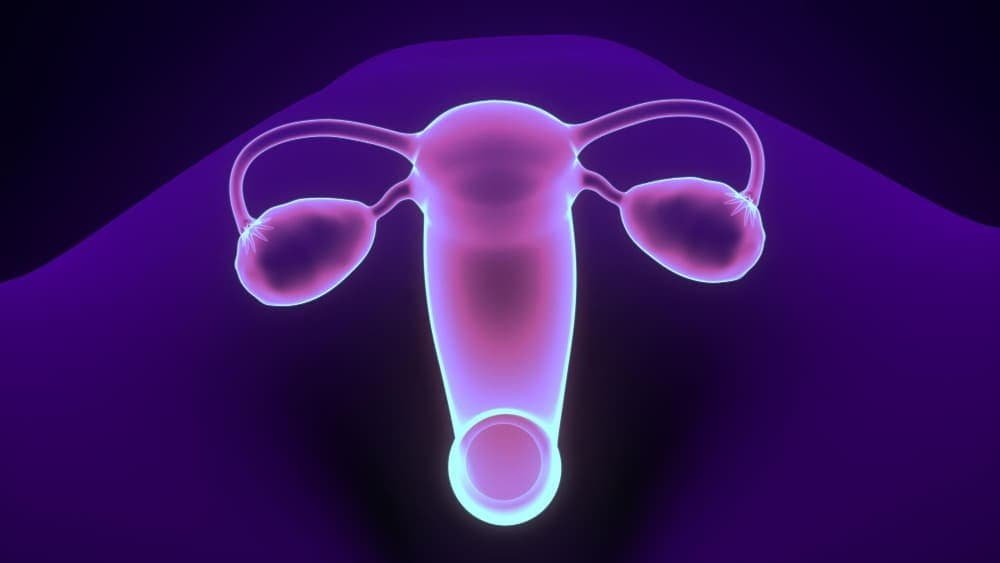Adenomyosis is a condition that affects the uterus, where the inner lining of the uterus (endometrium) breaks through the muscle wall (myometrium). This condition is often associated with significant menstrual pain and heavy bleeding. However, the question arises: does adenomyosis cause pain when not menstruating?
For many women, the experience of pain is often linked to their menstrual cycle. Yet, adenomyosis can disrupt this pattern, leading to chronic pelvic pain that extends beyond the typical monthly cycle. This persistent discomfort can significantly impact a woman’s quality of life, affecting daily activities, work, and overall well-being.

Does adenomyosis cause pain when not menstruating?
Adenomyosis is a condition characterized by the presence of endometrial tissue within the muscular walls of the uterus. This condition is often associated with heavy menstrual bleeding and severe menstrual cramps. Many women with adenomyosis experience intense pain during their periods, known as dysmenorrhea.
However, a common question arises: does adenomyosis cause pain even when not menstruating?
The answer is yes.
While the pain is typically worse during menstruation, adenomyosis can lead to chronic pelvic pain that extends beyond the menstrual cycle. This discomfort can be severe and prolonged, significantly affecting a woman’s daily life. The pain experienced outside of menstruation is often due to the diffuse spread of endometrial tissue within the uterine walls, leading to a constant state of inflammation and cramping.
Patients with adenomyosis may suffer from sharp, debilitating pain that can mimic other conditions such as endometriosis. This pain is not limited to the pelvic area but can radiate to the lower back and legs, making it difficult for women to carry out normal activities.
Additionally, women may experience pain during intercourse (dyspareunia) and have chronic pain that doesn’t correlate with their menstrual cycle.
The exact cause of the pain outside of menstruation in adenomyosis is not fully understood, but it is believed to result from the ongoing inflammatory response and the abnormal growth of endometrial tissue within the uterine muscle. This continuous inflammation can lead to a range of symptoms, including chronic pelvic pain, bowel discomfort, and leg pain.
Now that we have addressed the potential for adenomyosis to cause pain outside of menstruation, we will explore everything related to this condition in the following paragraphs. We will discuss the symptoms, causes, and treatment options in more detail, providing a comprehensive understanding of how adenomyosis affects women’s health. Stay with us as we delve deeper into this complex and often misunderstood condition.
What is Adenomyosis? Symptoms and Treatment Methods
Adenomyosis is a condition where the endometrial tissue, which typically lines the uterus, grows into the uterine walls. This abnormal growth can cause a range of symptoms, leading to discomfort and significantly affecting the quality of life for those suffering from it.
What is Adenomyosis?
Adenomyosis is characterized by the presence of endometrial tissue within the muscle walls of the uterus. This condition is most common in women in their 30s and 40s but can affect people of any age. The exact cause of adenomyosis is still not fully understood, but it is often associated with hormonal changes and uterine inflammation.
Symptoms of Adenomyosis
The symptoms of adenomyosis can vary widely from mild to severe. Common signs include:
- Menstrual Cramps (Dysmenorrhea): Intense and debilitating cramps are a hallmark of this condition, often worse than typical menstrual cramps.
- Heavy Menstrual Bleeding (Menorrhagia): Excessive blood flow during menstruation can lead to anemia and fatigue.
- Chronic Pelvic Pain: Discomfort and cramping can persist outside the menstrual cycle, leading to a constant ache.
- Pain During Intercourse (Dyspareunia): Painful sex is a common complaint among those with adenomyosis.
- Irregular Menstrual Cycles: The condition can cause periods to be irregular and unpredictable.
- Enlarged Uterus: The uterus may feel larger or more tender than normal due to the presence of abnormal tissue.
- Other Symptoms: Some patients experience leg pain, bowel discomfort, or pain during urination.
How Adenomyosis Affects Life?
The chronic pain and heavy bleeding associated with adenomyosis can lead to a lack of energy, difficulties with sexual life, and interference with daily activities. For many, this condition results in significant suffering and a reduced quality of life.
Diagnosis and Treatment
Doctors diagnose adenomyosis through a combination of medical history, pelvic exams, imaging tests (such as MRI or ultrasound), and sometimes biopsy procedures. Once diagnosed, treatment options can vary based on the severity of symptoms and the patient’s age, fertility desires, and overall health.
Treatment Methods
- Medications:
- Pain Relievers: Over-the-counter pain medications can help manage mild symptoms.
- Hormonal Therapies: Birth control pills, IUDs, or hormone-releasing medications can help regulate menstrual cycles and reduce pain.
- Minimally Invasive Procedures:
- Endometrial Ablation: This procedure destroys the lining of the uterus to reduce menstrual bleeding.
- Uterine Artery Embolization: A procedure that cuts off the blood supply to the affected tissue, reducing symptoms.
- Surgical Options:
- Hysterectomy: The removal of the uterus is the only definitive cure for adenomyosis and is typically considered when other treatments fail or when the condition is severe.
Living with Adenomyosis
Managing adenomyosis requires a tailored approach that considers the individual’s symptoms, age, and reproductive plans. While the condition can be challenging, various treatment options are available to help reduce pain and improve quality of life. Consulting with healthcare providers can lead to effective management strategies and relief from the chronic discomfort caused by adenomyosis.
By understanding adenomyosis and exploring the available treatments, patients can find ways to lead more comfortable and fulfilling lives despite this challenging condition.
☑️ What is the difference between adenomyosis and endometriosis?

 العربية
العربية 

